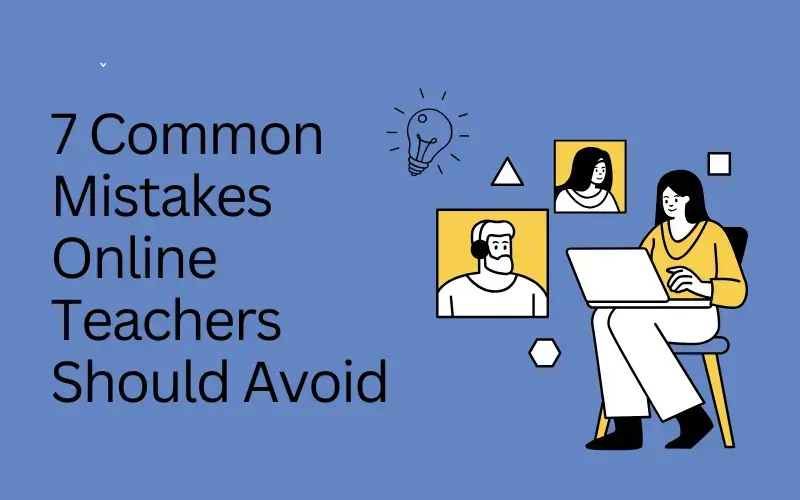
Online teaching has transformed education—allowing teachers to reach students anytime, anywhere. But with flexibility comes a new set of challenges. Many educators unknowingly make mistakes that affect student engagement, learning outcomes, and overall classroom experience.
Whether you’re a private tutor or teaching remotely, avoiding these pitfalls can make your online classes smoother, more productive, and more professional.
1. Treating Online Classes Like Physical Ones
Online teaching isn’t the same as standing in a classroom. You can’t rely on the same pace, tone, or visual cues.
👉 Tip: Redesign your lessons for digital delivery—keep slides concise, use visuals, and encourage short Q&A breaks.
2. Ignoring Student Interaction
Talking for an hour straight over Zoom is a surefire way to lose attention.
👉 Tip: Use polls, quick quizzes, or call students by name to keep them engaged. Remember, learning is a two-way process—even online.
3. Poor Time Management
Without proper scheduling, online lessons can stretch endlessly or feel rushed.
👉 Tip: Plan your classes with clear time slots for explanations, activities, and discussions. Use reminders or teaching tools that help you stay organized.
4. Neglecting Homework Follow-up
Assigning homework is easy—tracking it isn’t. Many teachers forget to review submissions or provide timely feedback.
👉 Tip: Use a structured system or portal where students can submit and receive feedback efficiently. This reinforces accountability and progress.
5. Mixing Personal and Professional Communication
Managing students or parents on WhatsApp can lead to missed messages or blurred boundaries.
👉 Tip: Keep your teaching-related communication separate using dedicated channels or educational platforms. It keeps things clear and professional.
6. Overloading Students with Content
In online settings, more isn’t always better. Too much material can overwhelm students.
👉 Tip: Focus on quality over quantity—deliver small, meaningful lessons and encourage self-paced learning.
7. Forgetting the Human Element
Technology can’t replace empathy. Students still need motivation, encouragement, and a sense of connection.
👉 Tip: Start each class with a friendly check-in, acknowledge progress, and celebrate small wins. It makes remote learning feel personal.
Final Thoughts
Online teaching offers endless opportunities—but only if managed thoughtfully. By avoiding these common mistakes and embracing smarter tools, teachers can make their virtual classrooms as effective as traditional ones—if not better.
Teaching online isn’t about using more tech; it’s about using it wisely to simplify your work and strengthen student engagement.